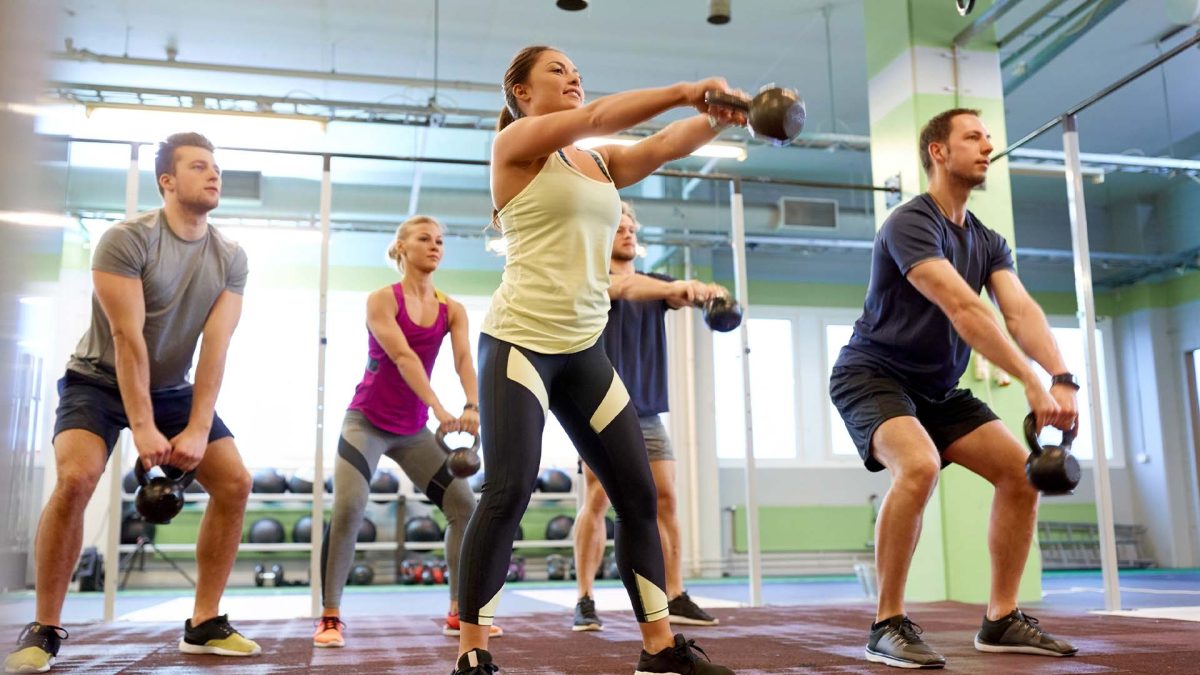Ready to transform your fitness journey with nothing but your body and great company? Group bodyweight training is revolutionizing how we think about exercise. According to Harvard Health, bodyweight workouts can boost your aerobic capacity by 33% and muscle endurance by 11% in just 10 weeks (source).
Think of bodyweight training as your gym-free ticket to fitness. No fancy equipment needed – just you, your workout buddies, and the power of shared motivation. Whether you're a complete beginner or a seasoned fitness enthusiast, group bodyweight workouts offer something for everyone.
Research from XPT Life shows that these workouts are particularly effective because they engage multiple muscle groups simultaneously while building real-world strength (source). Plus, when you're working out with others, you're more likely to push yourself further and stay committed to your fitness goals.
In this guide, we'll explore everything from basic movements to advanced techniques, helping you and your group create effective workouts that deliver results. You'll discover how to modify exercises for different fitness levels, learn proper form, and understand why group dynamics make these workouts so powerful.
Get ready to unlock your body's potential and experience the incredible benefits of training together. No gym membership required – just bring your determination and team spirit.
The Science Behind Bodyweight Training
Ready to discover why bodyweight training is a game-changer? Let's dive into the science that makes this workout style so effective. According to Harvard Health, bodyweight exercises can boost your muscle endurance by 11% and aerobic capacity by 33% in just 10 weeks source.
Think of bodyweight training as your body's natural gym. Unlike traditional weightlifting, these exercises engage multiple muscle groups simultaneously, improving your functional strength for everyday activities. Research shows that when you perform movements like push-ups or squats, you're not just building muscle – you're enhancing your balance, flexibility, and coordination all at once.
XPT Life reports that bodyweight workouts are particularly effective for building endurance because they typically involve higher repetitions source. This higher-rep approach keeps your heart rate elevated, turning strength training into a cardio workout too. Pretty efficient, right?
Your body's weight provides natural resistance that adapts to your fitness level. As you get stronger, you can modify exercises to make them more challenging – no expensive equipment needed! Studies show that this progressive overload principle is just as effective for building strength as traditional weight training.
The best part? Bodyweight exercises are incredibly versatile. You can perform them anywhere, making them perfect for group workouts. Plus, they're safer than weighted exercises when learning proper form, reducing the risk of injury while still delivering impressive results.
Remember those childhood movements like jumping, pushing, and pulling? That's exactly what bodyweight training focuses on – natural movements that your body was designed to perform. This functional approach translates directly to improved performance in daily activities, from carrying groceries to playing with your kids.
Essential Bodyweight Exercises for Groups
Ready to energize your group workout? Let's dive into the most effective bodyweight exercises that'll get everyone moving and motivated together. A study from Harvard Health shows these movements can boost your aerobic capacity by 33% in just 10 weeks!
Start with squats – they're perfect for building lower body strength. Add jump squats for those ready for more intensity, or stick to regular squats for beginners. Mountain climbers come next, targeting your core while raising that heart rate. For those needing a modification, try slowing down the pace or stepping instead of running.
Push-ups are your upper body powerhouse. Research shows they activate multiple muscle groups simultaneously. Beginners can start on their knees, while advanced participants can add a clap or elevation. According to EVO Fitness, burpees are the ultimate full-body movement, combining strength and cardio in one explosive exercise.
Here's your winning circuit format:
- 45 seconds of work
- 15 seconds of rest
- 3 rounds total
- Exercises: Squats, Mountain Climbers, Push-ups, Burpees
Want to challenge your group? Add plank holds between exercises. XPT Life research confirms this combination of movements improves both strength and endurance while keeping everyone engaged. Remember, form beats speed every time!
Sources:
Structuring Group Workouts
Start every group session with a 10-minute dynamic warm-up. Focus on movements like arm circles, leg swings, and light jogging to prepare your muscles for action. According to Harvard Health, proper warm-ups can reduce injury risk by up to 54% source.
Break your main workout into three 15-minute blocks. Begin with strength exercises like push-ups and squats, move to cardio intervals, and finish with core work. Research shows this varied approach maximizes calorie burn and muscle engagement source.
Keep the energy high with partner rotations every 5 minutes. This creates natural rest periods and builds group chemistry. Studies from EVO Fitness show that working in pairs can increase workout intensity by 21% source.
End with a 5-minute cool-down focusing on static stretches. Have participants form a circle to maintain group connection while bringing heart rates down. Hold each stretch for 30 seconds while sharing workout wins.
Mix up workout styles weekly to prevent boredom:
- Monday: Circuit training
- Wednesday: HIIT intervals
- Friday: Partner challenges
- Saturday: Team competitions
Track group progress using simple metrics like completed rounds or total repetitions. Celebrate improvements together and adjust difficulty based on group feedback.
Remember to keep rest periods structured - 30 seconds between exercises and 2 minutes between blocks. This timing keeps the workout flowing while allowing adequate recovery.
Adapting Workouts for Different Fitness Levels
Everyone starts their fitness journey from a different place, and that's perfectly okay! The beauty of bodyweight exercises lies in their adaptability. Let's explore how to make these workouts work for everyone in your group.
For beginners, start with simplified versions of classic exercises. Wall push-ups build strength before moving to knee push-ups, while assisted squats using a chair provide stability and confidence. According to Harvard Health, these modifications help develop proper form while building baseline strength (source).
Advanced athletes can challenge themselves with progression techniques. Add explosive movements to basic exercises - transform regular squats into jump squats or standard push-ups into clapping push-ups. XPT Life suggests increasing time under tension or adding isometric holds to intensify any movement (source).
Create inclusive workouts using the "Level 1-2-3" system. For each exercise, offer three variations:
- Level 1: Beginner-friendly with support
- Level 2: Standard movement
- Level 3: Advanced variation with added complexity
Track progress using simple metrics like total repetitions completed, workout duration, or rest time needed. EVO Fitness recommends recording these numbers weekly to celebrate improvements (source).
Remember, the goal isn't to be perfect - it's to be better than yesterday. Encourage participants to choose the level that challenges them while maintaining proper form. This approach keeps everyone engaged and progressing at their own pace.
Making it Fun and Social
Working out with others transforms exercise from a solo activity into an exciting social experience. Partner exercises like high-five push-ups or back-to-back squats create instant connections and accountability. According to a study by the University of Southern California, exercising with others increases enjoyment by up to 26% compared to working out alone source.
Team challenges spark friendly competition and boost motivation. Try dividing your group into teams for relay races or see who can hold a plank the longest. These playful competitions help everyone push harder while having fun. Research shows that group exercise participants are 95% more likely to stick to their fitness routine compared to those who work out alone source.
Build lasting friendships through partner-assisted exercises:
- Back-to-back wall sits
- Wheelbarrow walks
- Partner resistance rows
- Group planks with high-fives
- Team burpee challenges
The social atmosphere creates natural encouragement and support. A study in the Journal of Sport and Exercise Psychology found that working out in a group setting significantly increases exercise enjoyment and adherence source.
Create monthly challenges where groups compete to complete the most workouts or achieve specific fitness goals. These friendly competitions foster team spirit while keeping everyone accountable. Remember to celebrate both individual and group achievements - every small win builds stronger bonds and motivation for the next workout.
Safety and Form
Proper form is your best friend when it comes to bodyweight training. According to Harvard Health, maintaining correct technique not only maximizes your workout benefits but also prevents unnecessary strain on your joints and muscles (source).
Start each exercise slowly and focus on mastering the basics. Keep your core engaged during all movements - think about pulling your belly button toward your spine. When doing push-ups, align your wrists directly under your shoulders and maintain a straight line from head to heels. For squats, keep your chest up and knees tracking over your toes.
Watch out for these common mistakes:
- Rushing through movements
- Arching or sagging your back during planks
- Letting knees cave inward during squats
- Not breathing steadily through exercises
In group settings, take turns being the "form checker." XPT Life recommends partnering up and providing gentle feedback to each other (source). Remember to:
- Observe your partner's movement patterns
- Offer constructive feedback
- Celebrate proper form improvements
- Stay positive and supportive
Listen to your body and know when to take breaks. EVO Fitness suggests modifying exercises when you feel fatigue affecting your form (source). It's better to do fewer reps with perfect form than many with poor technique.
Stay hydrated and maintain proper breathing throughout your workout. Inhale during the easier phase of each exercise and exhale during the challenging phase. This breathing pattern helps stabilize your core and maintain control during movements.
Conclusion
Ready to transform your fitness journey with group bodyweight workouts? You've got all the tools you need to get started. Remember, bodyweight training has shown impressive results, with studies reporting a 33% boost in aerobic capacity after just 10 weeks (Harvard Health).
Getting started is simple. Grab a few friends, find a comfortable space, and begin with basic movements. Focus on proper form before adding complexity. As you progress, challenge yourself with advanced variations and longer workout sessions. The beauty of group workouts is that you'll have others to lean on for support and motivation.
Your fitness journey is unique, and that's perfectly okay. Whether you're just starting or looking to mix up your routine, bodyweight exercises offer an effective, equipment-free way to build strength and endurance (XPT Life). Take that first step today – gather your group, choose a few exercises, and start moving together. Your future self will thank you.
Ready to begin? Share this guide with potential workout partners and schedule your first session. Remember, every fitness journey starts with a single movement. Make yours count!
Additional Resources
Ready to take your group workouts to the next level? We've gathered the best tools and resources to support your fitness journey. The Nike Training Club app offers free guided bodyweight workouts perfect for groups. Download it from the App Store or Google Play.
Looking for exercise demonstrations? FitnessBlender's YouTube channel provides clear, professional tutorials for bodyweight movements. Check out their comprehensive playlist of no-equipment exercises. The American Council on Exercise (ACE) also offers detailed exercise guides and safety tips on their official website.
Want to connect with other fitness enthusiasts? Join the Reddit Bodyweight Fitness community for workout ideas, form checks, and motivation. The Meetup platform helps you find local workout groups in your area.
For science-backed training information, explore the Journal of Strength and Conditioning Research. They regularly publish studies on bodyweight training effectiveness and group exercise dynamics.
Remember, these resources complement your workouts – they don't replace proper form and gradual progression. Start with basics, focus on technique, and build from there.






